Adobe Sales Insight Actions —
Merging marketing insights with sales actions.
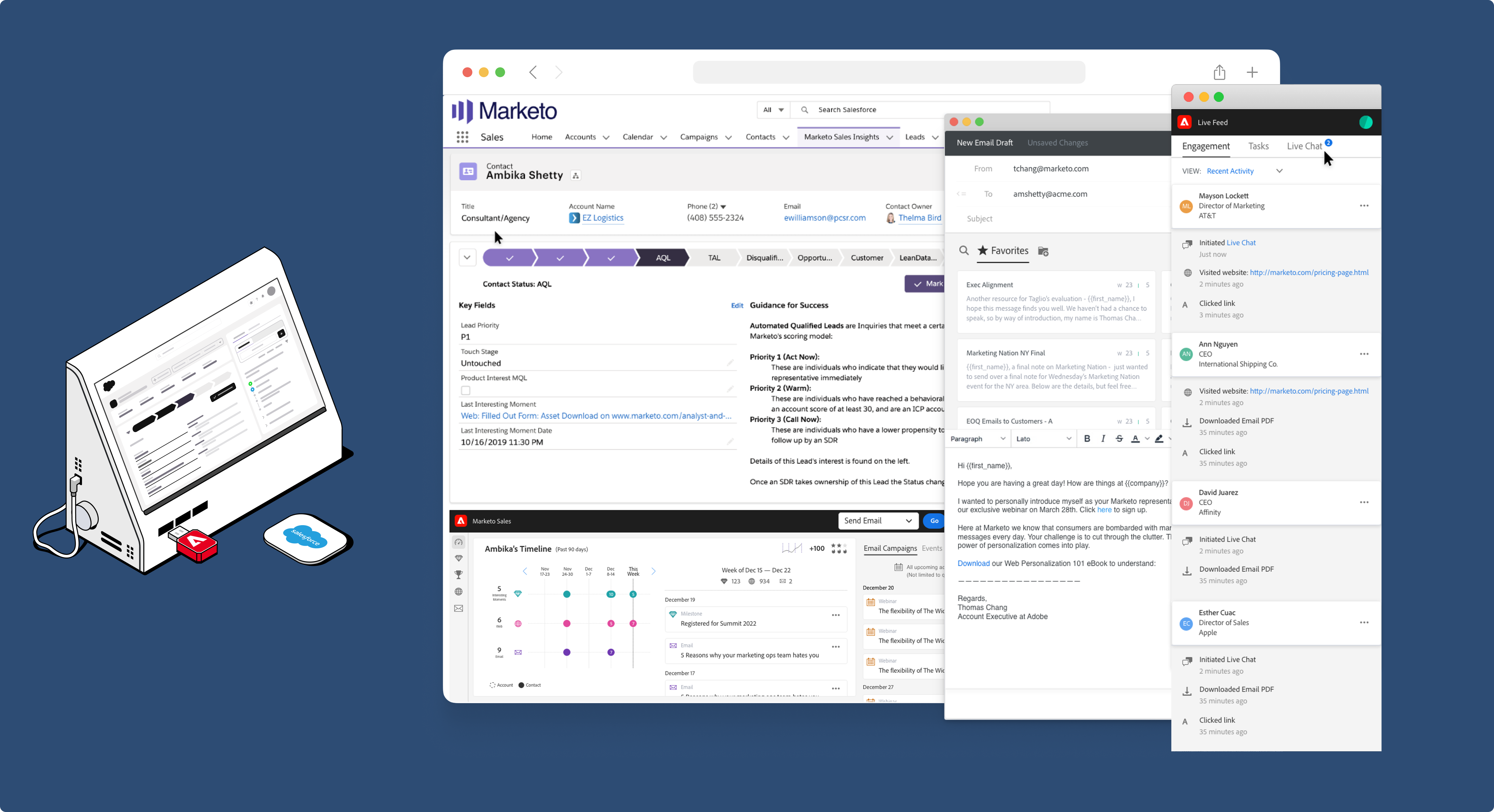
Adobe Sales Insight Actions is a Salesforce add-on designed for B2B enterprise sales teams. It equips sellers with engagement insights and sales outreach tools to help them intelligently prioritize and communicate with potential leads.
Ever since its original release in 2011, it has become an indispensable tool amongst Adobe's Marketo Engage customers. With more than 70% of Marketo Engage accounts opting into this add-on, it has been generating more than $65 million annually as of 2022.
CONTRIBUTIONS
User research
Wireframes + Testing
Prototyping
Visual Design
Design System
TEAM
Product Management (Andy Paul)
Lead UX Designer (Thomas Chang)
Sr. Software Engineer (Mohnish Thallavajhula)
TIMELINE
Project Start: Q4 of 2018
Delivery: Q4 of 2022
THE PROBLEM:
A tale of two products.
Disjointed user experience resulting from past acquisitions
In spite of being designed for very similar use cases, our two sales tools have historically been sold as separate products.
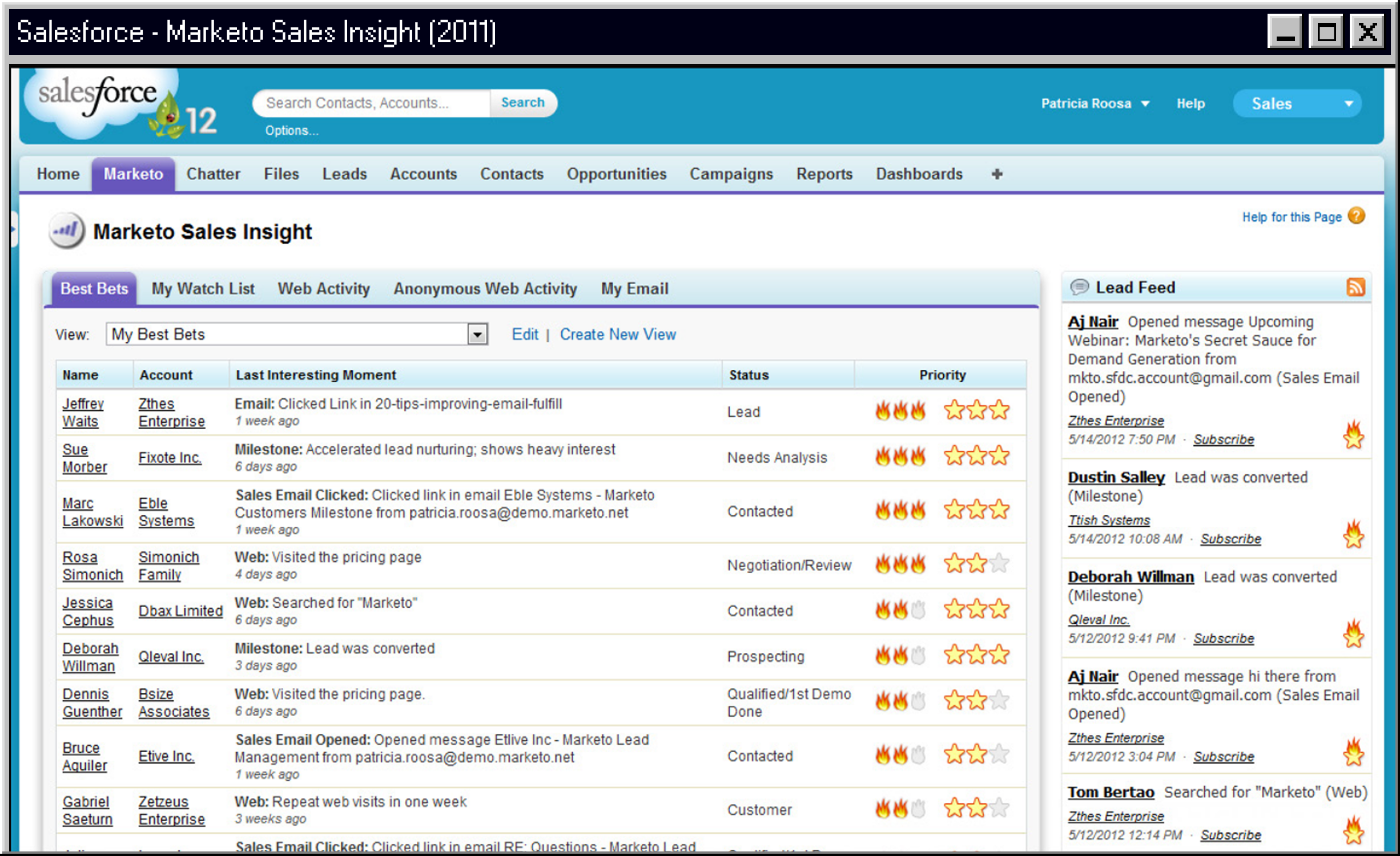
Marketo Sales Insight, developed in 2011
Delivers marketing insights into your Salesforce
- Salesforce add-on, enabling your marketing team to hand-off engaged leads to their sales reps
- Visualizes buyer signals - email views, websites visited, events attended
- Salesforce Integration, which is a seller’s workstation
- Functionality loved by teams, but UI is dated

Sales Connect (formerly ToutApp), acquired in 2017
Scales your sales team’s productivity
- Sales automation/productivity tool
- Enables sales actions (tracked email, call, add to campaign)
- Lacks direct Salesforce integration for sales action functionality
- Missing enterprise-grade functionalities (i.e. managerial settings to govern roles/permissions)
THE INVESTIGATION:
Building context through interviews and observation.
How did our products currently fit in the workflow? What were our biggest opportunities to provide value?
Before designing or building anything, we wanted to begin with a clear understanding of the end-to-end workflow.
After agreeing on our research objectives, PM and I drafted a research protocol and interviewed dozens of internal and external sellers.
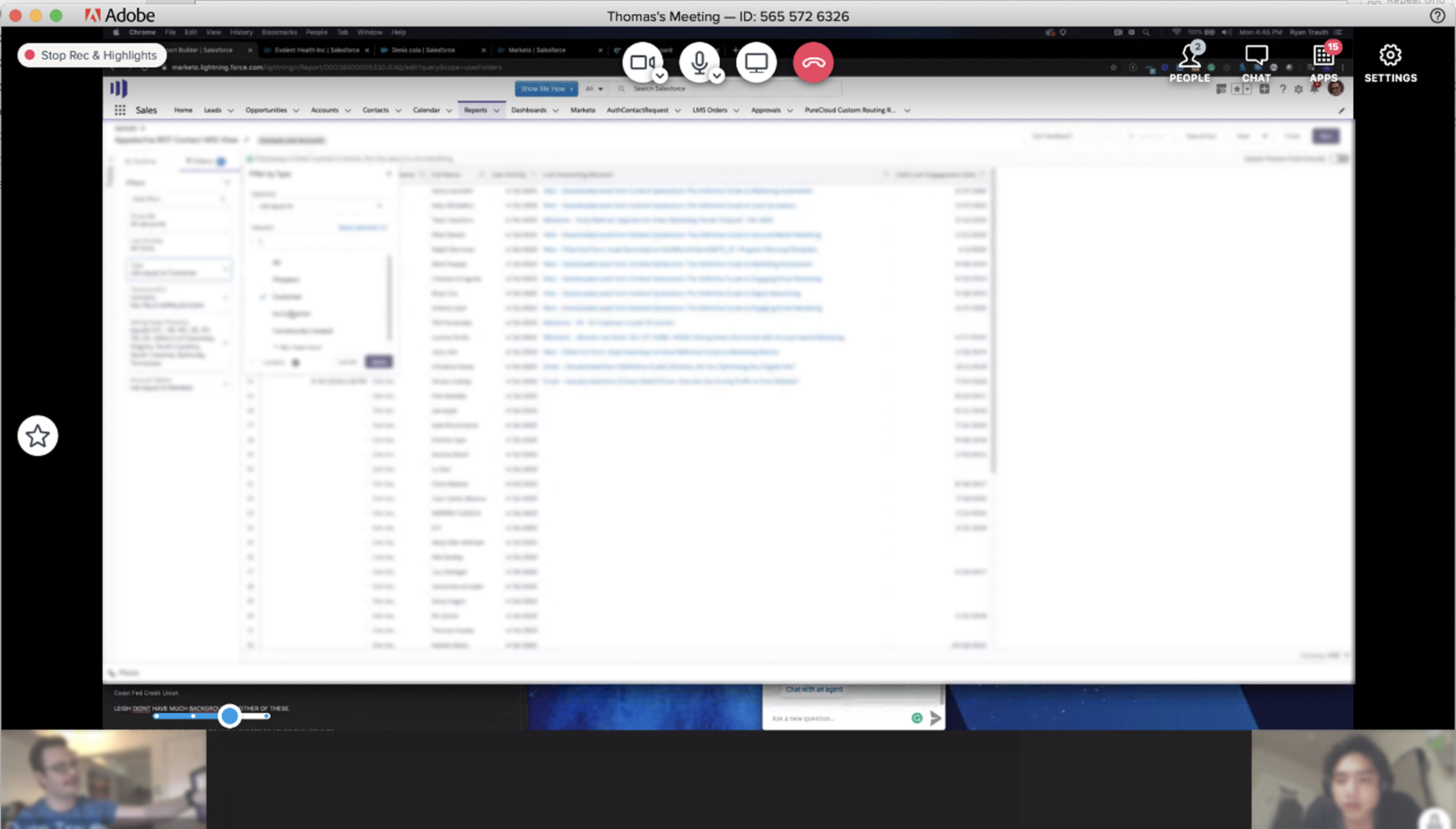
Here, an Account Executive shows us his prospecting process. We noticed how tedious and dated of an experience it was to manually filter through this engagement data.
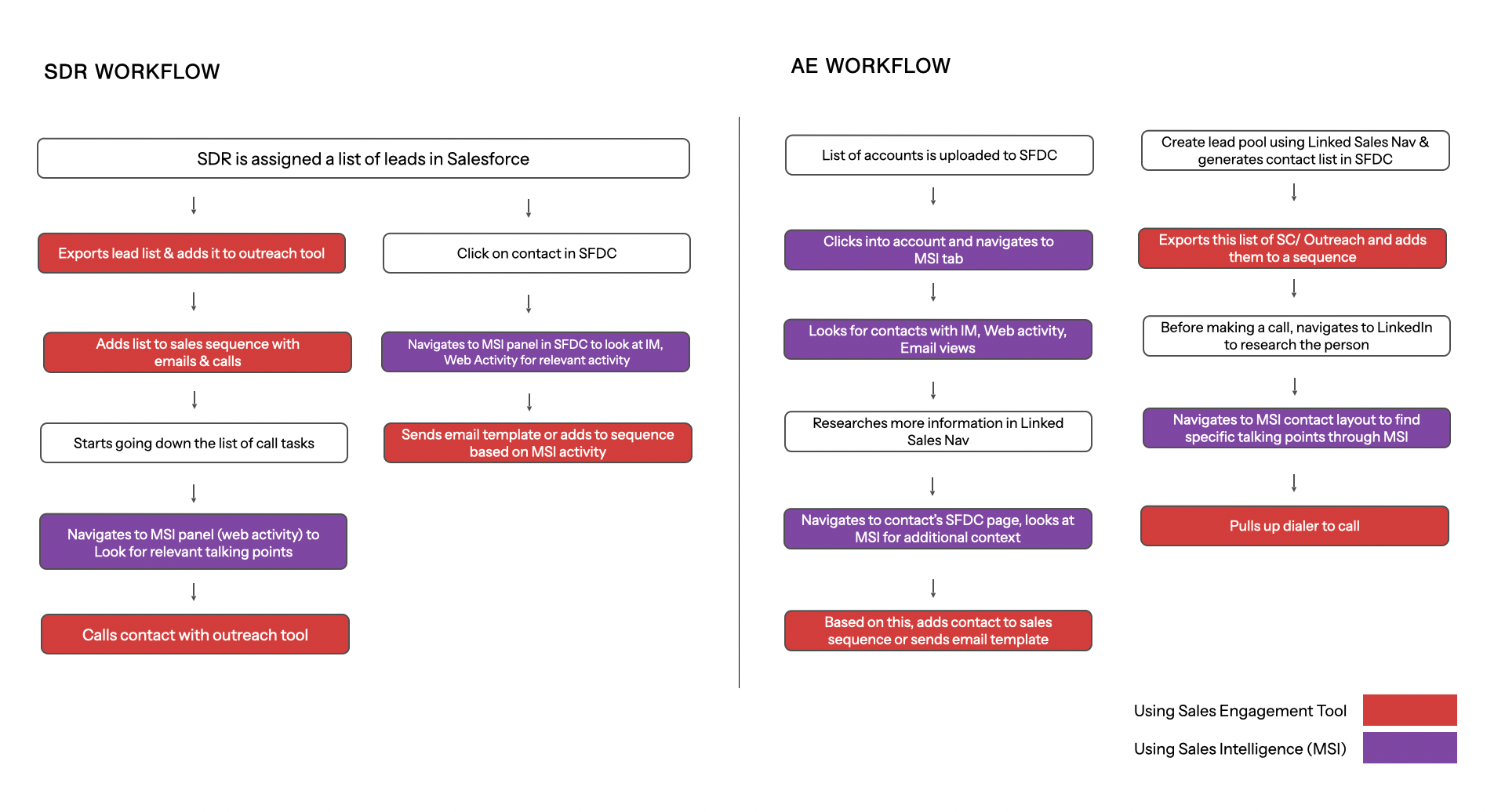
User friction: This diagram highlights how a seller must switch between two different apps during the sales process.
Conceptualizing the workflow through the
JTBD framework.
Framing the "why" behind what we're building, communicating it across functions
I broke down the sales rep's experience into three high-level JTBD (Jobs to be Done) statements.
Whether you were an engineer, a director, or a designer from another team, I wanted to make it easy for everyone to grasp the purpose behind our project and feature set.
This approach humanized our work, built empathy for the user, and got the team excited. It also played a key role in guiding conversations around feature prioritization.
Prospect: "Help me identify and prioritize leads" 🔥
When I’m prospecting, I want to quickly see which leads are showing strong interest or buying signals, so I can prioritize my outreach and connect with those most likely to convert.
Strategize: "Help me understand their story, quickly" 👀
When reviewing a lead, I want to quickly understand their engagement history and relevant insights, so I can decide the best way to approach them.
— THE CURRENT GAP BETWEEN INSIGHT AND ACTION —
Engage: "Help me act quickly and efficiently, with the right messaging" ⚡️
When I identify a valuable lead, I want to (A) reach out promptly with the right messaging, or (B) organize them for future follow-up, so I can efficiently move from one lead to the next.
Our org saw an opportunity:
How might we blend the existing capabilities into a seamless, modernized sales tool for enterprise sales teams?
Demonstrating an end-to-end vision.
Synthesizing the workflows into a cohesive, presentable story
After whiteboarding with my product managers, we wove together a product experience that mirrored an actual seller's end-to-end workflow.
I built a high-fidelity animated prototype to showcase our unification of function and form, presented below.
The step-by-step walkthrough of a sales workflow (prospecting, prioritizing, engaging) utilizing the various tools, now all seamlessly accessible in Salesforce.
Designing the onboarding experience
Step-by-step setup flow accomodating various customer specifications, leading into an introductory product tour
Designing the onboarding experience meant accommodating a variety of sales teams, each with their own tech stacks—different email clients and delivery channels.
I also had to account for edge cases, such as signed-in Salesforce users who hadn't set up their new plugin, first-time users navigating password creation, admins managing team access, and error handling.
I crafted a feature walkthrough that introduced users to the redesigned experience, ensuring a seamless first interaction.
One of a few onboarding workflows, guiding you from the invite link, email connection setup, and product tour.
Impact and reflections.
Scaling a beta to 100+ companies, thousands of users
After cross-functional sign-off, we launched an early-access beta to 25 companies, then onboarded 100+ more after resolving minor issues.
Insights Panel: To this day, several thousand sales representatives across these companies are actively leveraging the Insights panel.
Sales action metrics: While our email and dialer functionalities have seen strong weekly activation, adoption of the ‘Add to Sales Campaign’ feature remains a challenge. We believe there are opportunities to further support collaboration between Marketing and Sales teams to improve the campaign-building process.
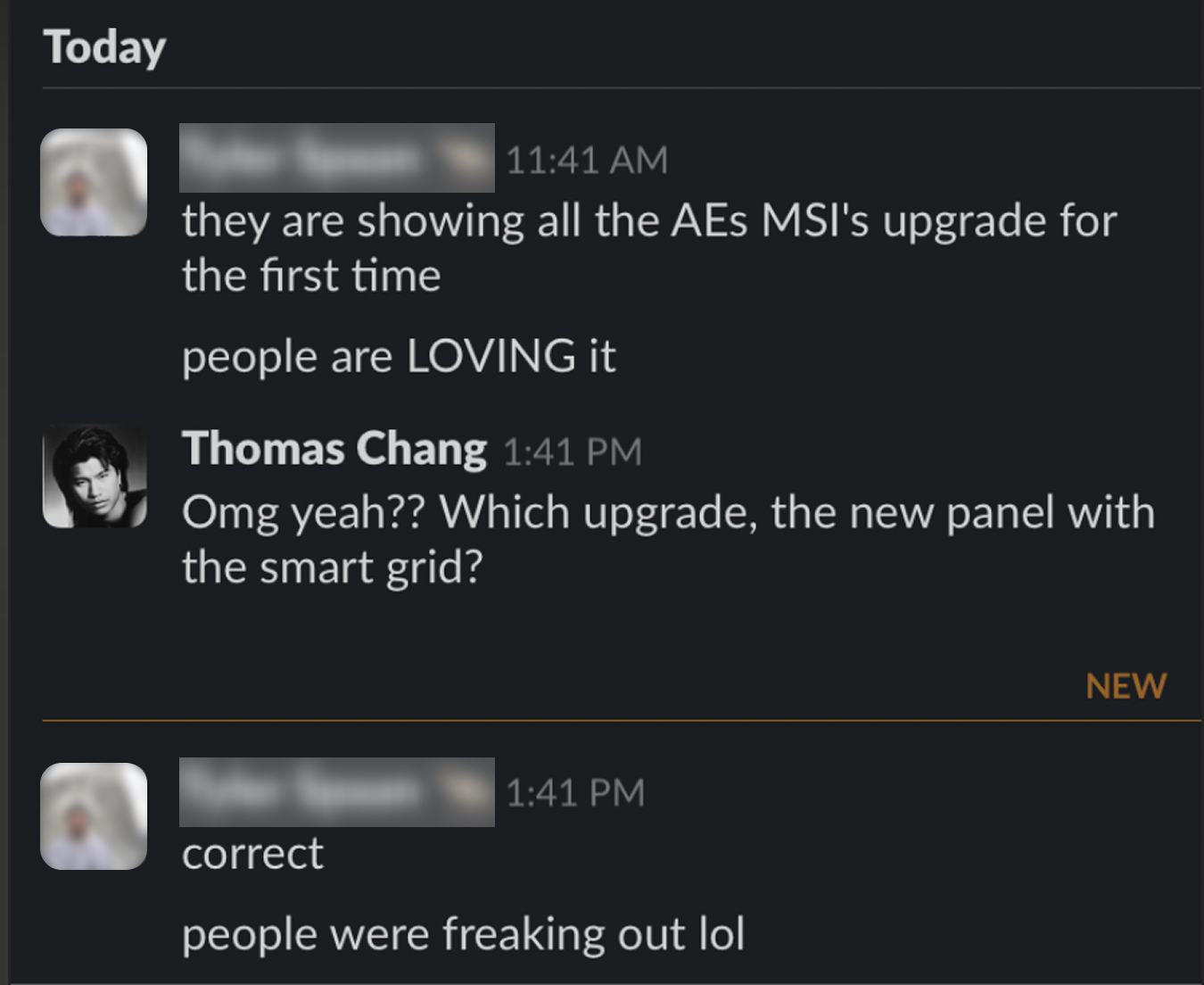
When we launched, I received this message from a senior internal user, who was not only excited to use the product, but also to sell it to potential customers.